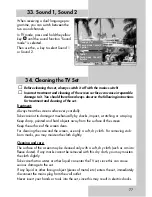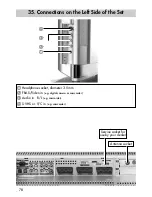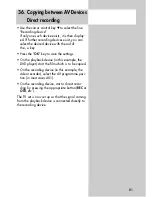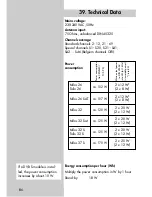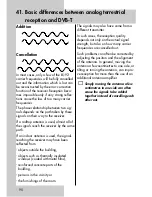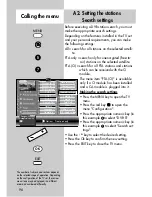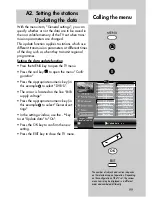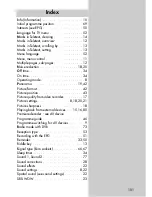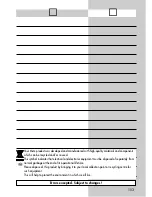
89
41. Basic differences between analog terrestrial
reception and DVB-T
Information for our dealers and interested
customers.
In order to understand how the behaviour
of DVB-T receivers differs from that of the
analog terrestrial receivers used until
now, two things are important: digital
transmission and the simultaneous broad-
casting network.
Digital transmission
A DVB transmitter does not transmit only
a single programme, but a set of pro-
grammes – normally six to eight. The
information for each programme – the
picture, the sound and teletext – is con-
verted into a digital format, i.e. into
numerical values which are grouped
together in packets. The packets of the
various programmes are then transmitted
sequentially in a so-called transport stre-
am.
Further information which permits the
receiver to detect and correct any errors
which occur during transmission is added
to this transport stream.
Example:
If the information 0 or 1 is to be transmit-
ted, the 0 could be encoded as 000 and
the 1 as 111. If one of the three digits
numbers is falsified during transmission,
i.e. the receiver receives, for example,
010 instead of 000, the receiver can
decide that the presence of at least two
zeros indicates that the intended informa-
tion value was 0 and, correspondingly,
that at least two ones indicates the infor-
mation 1.
If two of the numbers in a block are chan-
ged, the receiver can detect that an error
has occurred, but any attempt to correct
this would have the wrong result.
Example:
If the information 0 is encoded as 000
and is received as 101, the receiver
would assume that this should have been
111 and will then decode it, incorrectly,
as 1.
To sum up:
several programmes are transmitted by a
single transmitter in the form of digital
packets. Additional information is trans-
mitted to permit complete correction of a
certain number of transmission errors.
Simultaneous broadcasting
network
For DVB-T, the programmes are not trans-
mitted on a modulated carrier frequency;
instead, one channel with a width of 8
MHz contains 8,192 individual carrier
frequencies.
Some of the signals reaching the receiver
come directly from the transmitter, others
are signals which have been reflected
from obstacles in the vicinity and some
are even those transmitted by other trans-
mitters. Normally, these signals reinforce
each other. In extreme cases, however, if
they are out of phase and have the same
amplitude, the signals can cancel each
other out:



